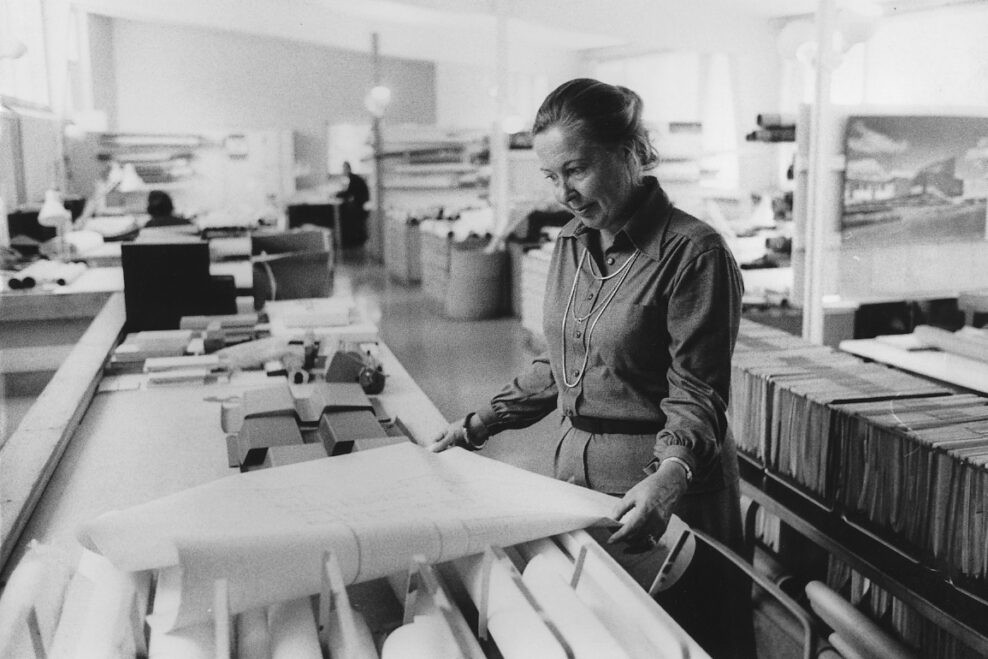100 years since the birth of architect Elissa Aalto
In November 2022, it will be 100 years since the birth of the architect Elissa Aalto (1922−1994). Starting in the 1950s, Alvar Aalto’s colleague and second wife played a major role in several of Aalto’s architect’s office’s building projects. Elissa Aalto ran the office in 1976−1994, following her husband’s death. The Alvar Aalto Foundation will be celebrating Elissa Aalto in various ways during 2022, highlighting this gifted and determined architect and designer’s life’s work alongside her famous husband.
Elissa Aalto (née Elsa Mäkiniemi) graduated as an architect in 1949 and began working in Alvar Aalto’s architect’s office in the same year. At that time, the office was working on several architecture competitions and on some extensive public commissions in Finland and abroad. After marrying Alvar Aalto in 1952, Elsa Mäkiniemi began using the name Elissa Aalto. The architect couple designed a summer residence for themselves, the Muuratsalo Experimental House (1952–54), on an island in Lake Päijänne, where they spent time in the summer.
Elissa Aalto was supervising architect on several of the office’s major building projects, the earliest being the construction site for Säynätsalo Town Hall (1949–52). This was followed, for instance, by Jyväskylä Institute of Pedagogics (now the University of Jyväskylä, 1951–71), the private house Maison Louis Carré (1956–65) in France, and the Nordic House (1962−68) in Reykjavik. Projects known to be Elissa Aalto’s independent designs include the SOS Children’s Village in Tapiola, Espoo (1964–65), and the private house Villa Hauta-aho (1982–83) in Seinäjoki. In her printed-fabric designs for Artek her architectural creativity took the form of the graphic patterns H55, Pisa and Patio.
Over the decades, Elissa Aalto’s role as a skilled mediator of Aalto’s ideas in the architect’s office grew greater. She ran the office in 1976−1994, bringing to completion several unfinished building projects, among them the Church of the Cross in Lahti (1969–79) and Riola Church (1966‒80) in Italy, along with Essen opera house, the Aalto Theatre, in Germany (1959, 1983–88). Jyväskylä Theatre (1964–82), Seinäjoki Theatre (1981–87) and Rovaniemi Town Hall (1963–88), completed under Elissa Aalto’s leadership, had already been added to Aalto-designed city centres. The architect’s office worked on the repair and alteration of Alvar Aalto’s buildings, the longest-lasting task being the Vyborg Library restoration project (1927–35).
Elissa Aalto also played a sizeable role in the setting up of the Alvar Aalto Foundation, which fosters Aalto’s heritage, in 1968. Following Alvar Aalto’s death, she was extensively involved in the discussion about his architectural heritage and the preservation of his buildings. She facilitated the transfer of the Alvar Aalto’s office’s drawing, photograph and document collection to the ownership of the Alvar Aalto Foundation, thus keeping the collection all in one place.
